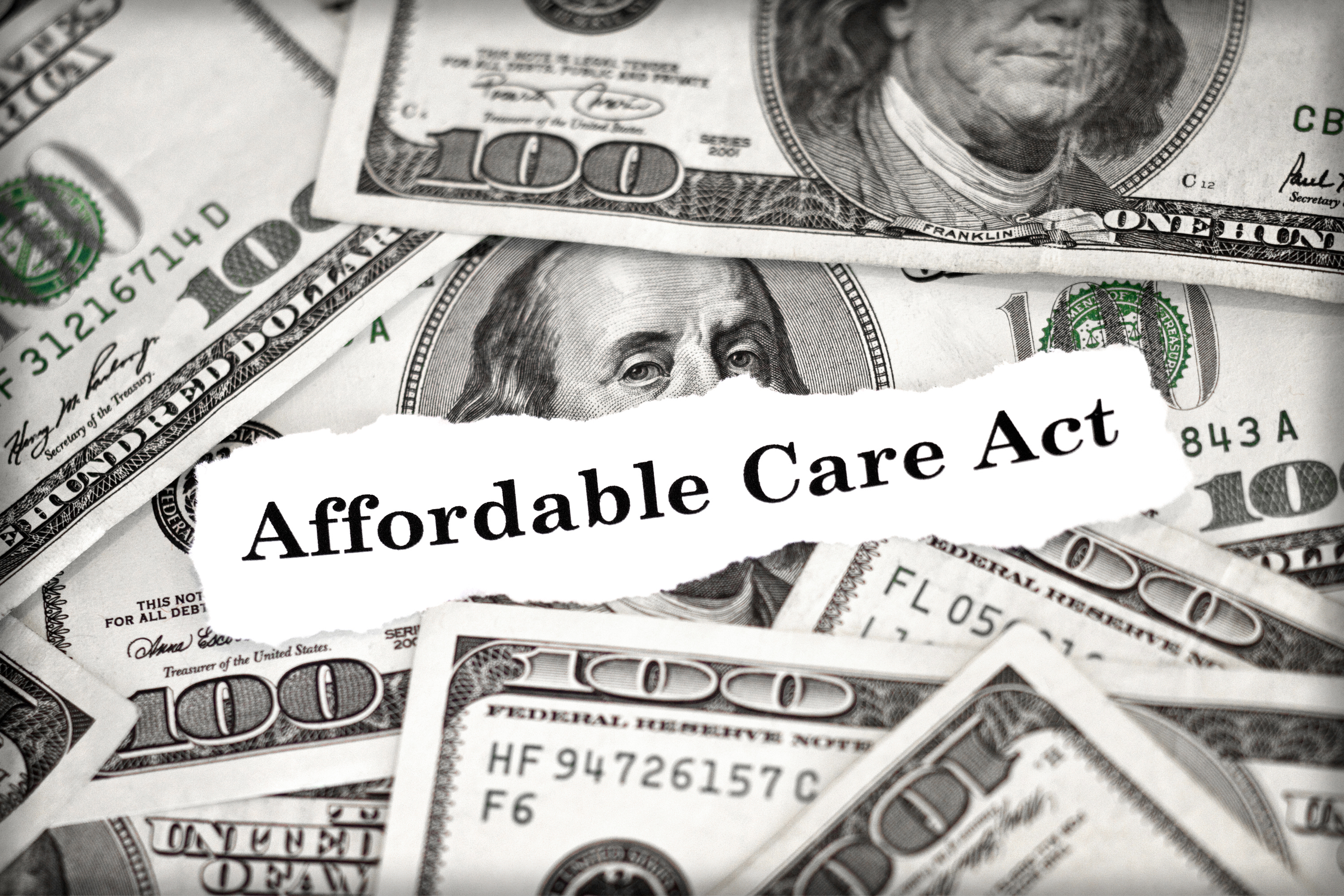8 Health-Care Stocks for Your Portfolio
Part defense, part offense and all bargain, health care stocks should thrive.

Health care stocks cover a lot of bases. They’re defensive because people always need medicine and medical care. They’re fast-growing because innovative treatments are powering profits at several drug companies. And now, they’re cheap, too.
Scrutiny of the health care system is high, thanks in part to the upcoming 2020 presidential election, and that has weighed on the sector’s stocks. From talk of Medicare for All to legal challenges to the Affordable Care Act to proposed drug-price regulations, “there’s a lot of political noise,” says Baron Health fund manager Neal Kaufman. As a result, shares in many good companies that were once expensive are now a bargain. “This is a great opportunity to buy stocks that are being punished unnecessarily,” Kaufman says.
Few industry watchers believe Medicare will be nationalized. What will happen with the ACA or drug pricing is harder to predict. Even so, some pockets of the health care sector face greater uncertainty as the debate continues. Hospitals and businesses focused solely on insurance, for instance, would be at risk in a single-payer system.

Sign up for Kiplinger’s Free E-Newsletters
Profit and prosper with the best of expert advice on investing, taxes, retirement, personal finance and more - straight to your e-mail.
Profit and prosper with the best of expert advice - straight to your e-mail.
But an aging population and the breakneck pace of drug innovation bode well for other parts of the sector over the long term. The Food and Drug Administration approved more new drugs in 2018 than in any year before. Just as the internet disrupted multiple industries, including tech and retail, “health care is on the verge of initiating significant change,” says Gary Robinson, a co-manager of Baillie Gifford U.S. Equity Growth Fund, which is available in many U.S. retirement plans
To cash in on these long-term trends, we scoured the sector and found eight good opportunities. The stocks we like fall into three broad health care areas: drugmakers, health care service providers, and medical device and equipment manufacturers. Their share prices may continue to bounce around, especially as we near the 2020 elections. Smart investors will buy more when shares dip. “If you have flexibility and you can pick your spots, you can make money,” says Matt Benkendorf, chief investment officer at money management firm Vontobel Quality Growth. (All returns and data are through June 14.)
Drugmakers
Half of all health care stocks in the U.S. are drugmakers. They include big pharmaceutical firms and older biotechnology companies that are steady growers and pay dividends, as well as smaller, faster-growing biotech firms with one or two products on the market and riskier outfits with no commercial products yet.
The lines are starting to blur as the traditional pharma firms, which combine chemicals to make drugs, and the biotech companies, which tap organic elements such as cells to create therapies, are coming together through mergers, acquisitions and partnerships to cash in on drug innovation. Gene sequencing and other advancements have changed the way we treat cancer, congenital diseases and other ailments, and “the level of innovation is accelerating,” says Damien Conover, Morningstar’s director of health care stock research.
Figuring out which companies will thrive, however, can be tricky. A good drug company has two key attributes: a stable of drugs with patent-expiration dates that are years away, and a fat pipeline of new drugs nearing FDA approval. But drugs and the diseases they treat are complicated. And success often breeds stiff competition. “Behind a lot of blockbusters are a lot of fast followers,” says Jim Golan, comanager of William Blair Large Cap Growth fund.
It doesn’t help that drug prices are under a microscope. Thanks in part to the current administration’s efforts to lower the price Medicare customers pay for some drugs, “the pricing power of pharma firms has been stopped,” says Edward Yoon, manager of Fidelity Select Health Care Portfolio. That’s one reason Yoon, among others, eschews big pharma in his fund. Still, big drugmakers with a slew of products will weather changes in pricing and reimbursement better than companies with thin product lines. Smaller outfits that offer life-transforming drugs for rare diseases may also come through with less damage.
Merck (symbol MRK, price $83) is an elder statesman in the pharma world that should continue to thrive in the new order. Keytruda, Merck’s immunotherapy drug that basically gets the immune system to kill cancer cells, is “rapidly becoming one of the largest products we’ve ever seen,” says JPMorgan Chase analyst Christopher Thomas Schott. The drug is currently approved to treat 11 types of tumors, including advanced non-small-cell lung cancer and melanoma.
In the drug world, a medicine is a blockbuster if it surpasses $1 billion in annual sales. Last year, Keytruda hit $7 billion. Morningstar expects it to reach $16 billion in 2022. And that number could rise. Scientists are testing Keytruda, alone and in combination with other therapies, for dozens of diseases in more than 1,000 studies. And Merck has time to cash in. The oldest patent on Keytruda doesn’t expire until 2028.
Merck also makes vaccines that are big cash generators and are less subject to drug-pricing pressures. In 2018, sales of Gardasil, the cervical cancer vaccine, jumped 37% from the year before to hit $3.2 billion. The firm also has an animal health unit, which doesn’t suffer from the regulatory uncertainty that vexes the human side of the business. The pet and livestock business represents only 10% of the company’s overall operations, but it’s growing faster than Merck’s drug unit.
Merck shares trade at 16 times estimated 2020 earnings—a premium to shares of its large-company pharmaceutical peers, which trade at an average of 14 times 2020 earnings. But Merck is growing faster. Over the next three years, analysts expect earnings to increase 8.9% per year, on average, which is better than the 8.2% rate of other large pharma firms.
Biotech company Vertex Pharmaceuticals (VRTX, $170) has a lock on treatments for cystic fibrosis, or CF, a rare lung disease caused by a gene mutation. The company’s drugs are transformational. CF treatment was once limited to alleviating the symptoms of the disease. But Vertex’s therapies treat the underlying cause of the disease by trying to allay the gene mutation. Of the estimated 75,000 CF cases worldwide, Vertex makes three drugs that treat 34,000 cases.
Its reach is expanding. The company has a new drug referred to as the “triple combination,” which is expected to win approval in the U.S. in 2020 and could nearly double the number of CF cases Vertex treats, says CFRA analyst Kevin Huang. “With the likely approval of the triple, Vertex would cement its dominant position as the only real player in developing targeted therapy for CF,” says Credit Suisse analyst Evan Seigerman.
In the meantime, the business is healthy. Vertex has $3.2 billion in cash and little debt. Analysts expect Vertex earnings to increase an average of 22.5% per year over the next three years, way ahead of the average 17.8% growth rate for its peer group, biomedical-genetics drug companies.
A smaller biotech firm with no profits—yet—fills out our drugmaker favorites. Neurocrine Biosciences (NBIX, $84) is expected to be profitable in 2020. It has two drugs on the market and a strong pipeline of therapies in all stages of development. One of its commercial drugs, Ingrezza, is a “best in class” therapy for tardive dyskinesia, a condition that causes jerky, involuntary face and body movements, says Credit Suisse’s Seigerman. He thinks it could fetch annual sales of $2 billion by the early 2020s.
Neurocrine also has Orilissa, a drug for endometriosis pain, which Seigerman believes could be a market leader. Neurocrine won’t rake in every dollar made on Orilissa sales, because the firm partnered with AbbVie to market the drug, but it will earn a meaningful royalty. Neurocrine is Seigerman’s top pick in the small and midcap biotech category. He expects strong revenue growth of 31% annualized over each of the next five years.
Health care services
We’re in the early days of a revolution that could one day lower overall health care costs for everyone. In today’s health care system, a doctor and a hospital are most often paid to treat a patient who already suffers from an illness. In the future, prevention and continuing care—some call it holistic care—will take precedence.
The new health care model will only work if every p in the system—patients, providers (doctors, hospitals) and payers (insurers)—work together to make good decisions early, so healthy patients can stay well, and out of the hospital, longer. A healthier population, the theory goes, will lead to fewer dollars overall spent on health care.
It’s happening already in a handful of U.S. cities, including Austin, Denver, and parts of Ohio and Florida, says Yoon. In those areas, hospital admission rates and emergency room visits per 1,000 people (industry measures of the quality of care) have dropped significantly due to the alignment of the p’s. Costs have come down, too, he adds. But it could be a generation before we see change on a national level. “What works in Texas may not work in New York. My expectation is that it will happen eventually, but it will take longer than anyone wants,” says Yoon.
UnitedHealth Group (UNH, $245) stands at the center of this long-term trend. UnitedHealth has a stake in every p. Being the biggest health insurer in the country makes it a payer. It’s a provider through its OptumHealth division, which offers medical services at urgent-care clinics and walk-in surgical-care centers. And its 50 million insured members are patients. UnitedHealth is essentially a microcosm of the country’s health system.
OptumInsight is UnitedHealth’s secret weapon. The business unit collects and analyzes treatment data that can be used to improve health care outcomes, thus lowering medical bills. “You call your insurer,” says Andrew Adams, lead manager of Mairs & Power Growth fund, “and they’ll have your entire medical history. Based on records from doctors, drug prescriptions and hospital records, they’ll know the best course of action to deliver care to you more efficiently.” At least, that’s the idea.
CVS Health (CVS, $54) aims to give UnitedHealth a run for its money. It’s best known for its drugstores—70% of people in the U.S. live within three miles of a CVS pharmacy—but it operates more than 1,000 walk-in clinics, too. With its acquisition of Aetna in late 2018, CVS is now also an insurer.
Both stocks are bargains. UNH shares trade at 16 times estimated earnings, a level not seen since 2014 and a rare discount for these premium shares. “UnitedHealth has always been expensive,” says Mairs & Power’s Adams, who loaded up on more shares when the stock sold off in early 2019. Analysts expect 12.7% annualized earnings growth over the next three years.
CVS took on debt to acquire Aetna for $70 billion, and consequently it did not raise its dividend in 2018, ending a 14-year record of consecutive annual increases. The integration of Aetna and the debt paydown will take time, says CFRA’s Huang. (The completed merger has been challenged in court, but Huang expects the deal to remain mostly intact.) He rates the stock a “strong buy,” in part because at the current price, it’s a bargain. It trades near its 52-week low, sporting a 3.7% yield, and has a price-earnings ratio of 8—more than 40% below the stock’s median historical P/E of the past 10 years. Meanwhile, earnings are expected to increase by an annualized 7.2% over each of the next three years.
Medical devices
Drugmakers are spending gobs of money to research and develop innovative therapies. Life sciences tool companies—a subset of the medical-devices industry—make “the picks and shovels” that enable that effort, says Jason Kritzer, comanager of Eaton Vance Worldwide Health Sciences fund. Analysts expect companies in this group to increase earnings over the next three years at a rate of 12% to 14% per year, on average, compared with 10% for companies in Standard & Poor’s 500-stock index.
Size helps in the medical device world. A lack of funding has, in part, made it difficult for small device companies to survive on their own, and most are acquired by large companies. Accordingly, our favorites have heft in their favor.
Thermo Fisher Scientific (TMO, $285) is a big kahuna in the life sciences industry. Record spending on biotech-drug research is fueling demand for the company’s lab products and services, gene-sequencing instruments, analytical tools, and diagnostic kits. More than 80% of its revenue is tied to recurring sales of its consumable products (syringes, diagnostic tests and other single-use items) and services, says Chris Smith, manager of Artisan Thematic fund. That makes the company less vulnerable to economic swings, says Smith. Meanwhile, Thermo leads the sector in sales and earnings growth that is internally driven (and not attributable to acquisitions, say). Moreover, he adds, “we think TMO has the best management in the industry.”
Analysts expect 12.5% profit growth annualized over the next three years. The stock trades at 23 times estimated earnings, compared with an average multiple of 36 for its peers in the medical instruments market.
After spinning off its drug division in 2013, Abbott Laboratories (ABT, $82) now focuses on a diverse roster of products that includes nutritional drinks, diagnostics, generic drugs and medical devices. But a trio of new products put it in the sweet spot of the health care sector’s innovation surge, says William Blair’s Golan.
One is FreeStyle Libre, a 14-day wearable continuous glucose monitor that does away with finger pricks and tracks patterns and trends over time, helping patients manage their diabetes better. Another is MitraClip, a device that allows patients with a certain heart condition to get treatment with less-invasive surgery (in other words, not open-heart surgery). It has no competition, says William Blair analyst Margaret Kaczor, and a recent FDA decision doubles the number of eligible patients for the device. The third of the trio, Alinity, is a next-generation diagnostic system that integrates and streamlines the workflow of a diagnostic lab, using analytics and automation to standardize research processes, reduce costs and manage labor constraints.
Abbott proves that even giant companies can be innovative. More than 50% of the firm’s sales come from products that launched within the past six years. Analysts expect annualized profit growth of 12.3% over each of the next three years.
Intuitive Surgical (ISRG, $497) is a leader in minimally invasive, robot-assisted surgery. Surgeons perform operations—urological and gynecological procedures, among others—using the company’s technically advanced instruments and 3D, high-definition vision capability known as the da Vinci system. “This market is in its infancy,” says Samantha Pandolfi, a comanager of Eaton Vance Worldwide Health Sciences. Of the 60 million general surgical procedures performed worldwide last year, almost a million were conducted with the da Vinci system. “There’s a long runway for growth, and the company’s lead over the competition is wide,” she says. “We think it can sustain double-digit sales and earnings growth for a very long time.” Analysts, according to Zacks Research, expect 12.2% earnings growth, on average, over each of the next three years.
Invest with a specialist
The outcomes for small, go-go biotech firms can be extreme—you either win big or you lose everything—and the work they do is complex. You might appreciate a fund with an expert at the helm who has the experience and resources to understand and weigh the risks.
Ed Yoon has been analyzing health care companies for over a decade, and has run Fidelity Select Health Care Portfolio (FSPHX) since 2008. The fund has delivered above-average returns with below-average volatility under Yoon; its 10-year, 18.3% annualized return beats 90% of all health care funds. Yoon takes big stakes in steady, large companies that provide ballast for the smaller bets he makes on burgeoning biotech firms. Biotech firms, health care services companies (including insurers), and medical instruments and device makers represent the biggest chunks of the fund.
As manager of Janus Henderson Global Life Sciences (JAGLX), Andy Acker has been researching health care companies for more than two decades (he comes from a family of physicians, too). He spreads his investments across the sector, keeping one-third of the portfolio in drugmakers, one-third in biotech firms, and the rest in health care services and medical devices. Over the past 10 years, Janus’s annualized return beat 78% of its peers.
Get Kiplinger Today newsletter — free
Profit and prosper with the best of Kiplinger's advice on investing, taxes, retirement, personal finance and much more. Delivered daily. Enter your email in the box and click Sign Me Up.

Nellie joined Kiplinger in August 2011 after a seven-year stint in Hong Kong. There, she worked for the Wall Street Journal Asia, where as lifestyle editor, she launched and edited Scene Asia, an online guide to food, wine, entertainment and the arts in Asia. Prior to that, she was an editor at Weekend Journal, the Friday lifestyle section of the Wall Street Journal Asia. Kiplinger isn't Nellie's first foray into personal finance: She has also worked at SmartMoney (rising from fact-checker to senior writer), and she was a senior editor at Money.
-
 Kentucky Tax Deadline Extension Might Cost You More Money: What to Know
Kentucky Tax Deadline Extension Might Cost You More Money: What to KnowState Taxes Kentucky flooding and storms caused the IRS and state to extend the 2025 tax filing deadline. But should you file later?
By Kate Schubel Published
-
 Seven Tasks Retirees Can Do With Online Banking or a Mobile Banking App
Seven Tasks Retirees Can Do With Online Banking or a Mobile Banking AppRetirees can do more than check their bank account balance online.
By Donna Fuscaldo Published
-
 End of Expanded Premium Tax Credit Would Drive Uninsured Rates Higher
End of Expanded Premium Tax Credit Would Drive Uninsured Rates HigherTax Credits Millions of people could become uninsured if Congress fails to extend the enhanced premium tax credit.
By Gabriella Cruz-Martínez Published
-
 Over 162,000 Dreamers Cut Off From Affordable Care Act Insurance
Over 162,000 Dreamers Cut Off From Affordable Care Act InsuranceHealth Insurance A federal court in North Dakota has blocked ACA coverage for DACA recipients in 19 states. Here's what it means.
By Gabriella Cruz-Martínez Published
-
 2025 Open Enrollment: Some DACA Recipients Can Purchase Affordable Care Act Health Insurance
2025 Open Enrollment: Some DACA Recipients Can Purchase Affordable Care Act Health InsuranceOpen Enrollment Your eligibility to purchase health insurance from the federal marketplace may have changed. Here's what you need to know.
By Gabriella Cruz-Martínez Published
-
 Roth IRA Contribution Limits for 2025
Roth IRA Contribution Limits for 2025Roth IRAs Roth IRA contribution limits have gone up. Here's what you need to know.
By Jackie Stewart Last updated
-
 Medicare, ACA Call Center Workers To Hold Another Protest: What To Know
Medicare, ACA Call Center Workers To Hold Another Protest: What To KnowMedicare and Obamacare call center employees plan another protest, this time in Washington, DC on December 12.
By Joey Solitro Last updated
-
 Four Tips for Renting Out Your Home on Airbnb
Four Tips for Renting Out Your Home on Airbnbreal estate Here's what you should know before listing your home on Airbnb.
By Miriam Cross Published
-
 Five Ways to a Cheap Last-Minute Vacation
Five Ways to a Cheap Last-Minute VacationTravel It is possible to pull off a cheap last-minute vacation. Here are some tips to make it happen.
By Vaishali Varu Last updated
-
 How to Figure Out How Much Life Insurance You Need
How to Figure Out How Much Life Insurance You Needinsurance Instead of relying on rules of thumb, you’re better off taking a systematic approach to figuring your life insurance needs.
By Kimberly Lankford Last updated